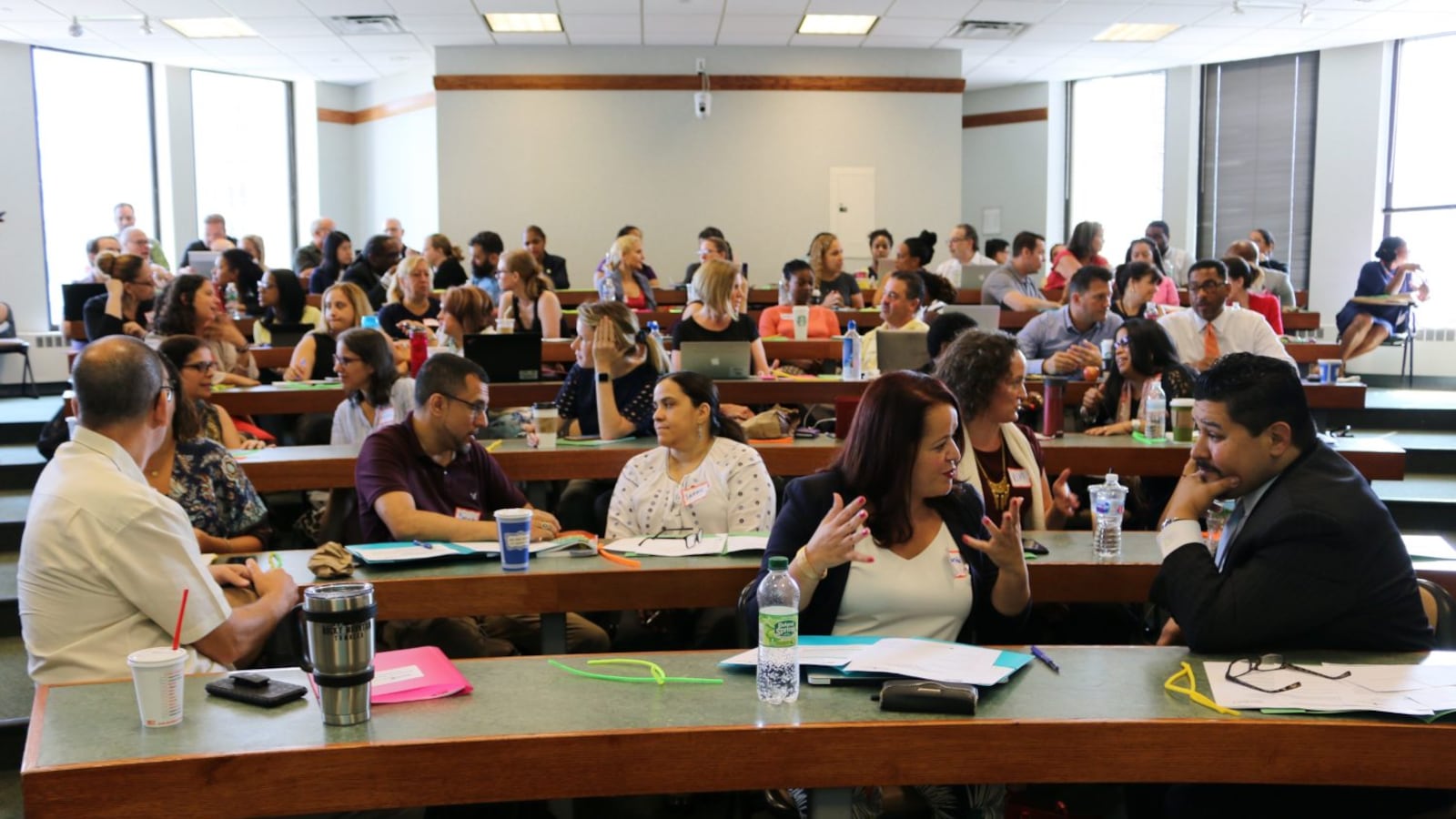After bending fluorescent pipe cleaners into loopy and angular shapes, a group of about 100 New York City principals and superintendents paired up for a chat. Their assignment: to recount their childhood aspirations of what they wanted to be when they grew up.
This was no arts and crafts class — and no ice breaker, either. The Wednesday morning session at Brooklyn Law School was an example of anti-bias training that the education department will now require for every employee who works with students across the country’s largest school system.
After committing $23 million to the work this year, Chancellor Richard Carranza announced at the session that the trainings will be mandatory, and that the city aims to speed up how quickly they happen. The goal is to compress the original four-year roll out to two.
“It’s about us as a community saying we want to change systems so that it privileges all of our students in New York City,” Carranza said. “The evidence right now, I will tell you my friends, is that not all students are being served well.”
Advocates had long agitated for the training, citing disparate rates in school discipline for black and Hispanic students, and high-profile incidents of schools accused of teaching racist lessons in the classroom. They argue that teachers need to be better equipped to serve diverse students as the city moves forward with plans to integrate its starkly segregated schools.
“We have to make school environments the most welcoming places possible for our young people. That includes adults doing personal work,” said Natasha Capers, a coordinator for Coalition for Educational Justice, a parent organization that lobbied for the training.
Their advocacy has gotten a boost since Carranza became schools chancellor in April, bringing an approach that is bolder and more frank than his predecessor when it comes to addressing the system’s racial inequities. On Wednesday, he spent more than an hour participating in the training session just like the other school leaders, calling it “God’s work.”
“This is going to penetrate everything we do,” he said.
Wednesday’s session was lead by experts from the Perception Institute, a research and training organization, and Safe Places for the Advancement of Community and Equity (SPACEs), which provides leadership training. The pipe cleaners helped bring to life a metaphor about “bending” expectations for what educators might learn throughout the day. The one-on-one conversations were a way to “interrupt” stereotypical assumptions about other people by having sustained conversations with them, said trainer Dushaw Hockett.
“This isn’t some touchy-feely, get-to-know-you exercise,” he said.
There is some evidence that, when done right, anti-bias trainings can work — and improve outcomes for students. But there is also research that shows it can often be ineffective.
Carranza said the city is committed to doing the work for the long-term, with the trainings designed to be ongoing and build on each other. He also said the department will keep an eye on measures such as student attendance and whether teachers report improvements in school climate to gauge whether it’s having an impact.
“This is going to be one of those cornerstone pieces in terms of, how are we going to continue to transform this immense system to really, truly serve all students?” he said. “This is going to be something that’s not going to fall off the radar. We’re going to keep pushing.”

